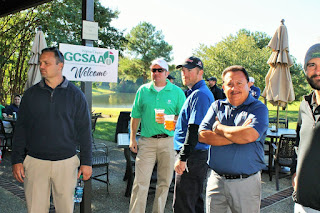Pennsylvania has a budget deficit, and the golf industry could suffer the consequences. The state's General Assembly is considering expanding sales tax to include "amusements and recreational activities." This would include – you guessed it – greens fees. Other businesses subject to the tax include, but are not limited to: amusement parks, bowling alleys, marinas, car trade-ins, personal care services (what!?), RV and camping sites and movie downloads. In most areas of the state, this tax would total six percent, with exceptions of seven percent in Allegheny County and eight percent in Philadelphia.
So, what does this mean? It means higher costs for our customers. Consequently, the Pennsylvania Golf Owners group is drafting a letter to oppose this taxation, and our PGCSA logo will be included on the letter to support this opposition. Our main argument is that the golf industry continues to struggle for participants and their discretionary income. The addition of the sales tax would make golf more expensive to the consumer and that consumer will play less often, if at all. This is something the golf industry in Pennsylvania cannot afford. Additionally, some courses are already subject to a local amusement tax and the inclusion of a state sales tax would be double taxation.
When opposing such issues, it is important for us to share our industry's positive attributes with our state legislators. For example, Pennsylvania's 663 golf courses employ approximately 30,000 individuals. Likewise, the golf industry is responsible for nearly two billion dollars in direct economic impact in Pennsylvania.
While there is not an official date set to vote on this issue, you can take action by calling or emailing your state legislators to voice your opposition. To find out who your representative is, please visit the state government website.
Please explain why we oppose this tax, what impact it could have on our industry, and the positive aspects of our economic impact in Pennsylvania. Furthermore, it is always beneficial to drive your point home by bringing it local – share how many individuals your course employs and other pertinent information that could highlight the impact of this change to that representative's district. As the old saying goes, "all politics are local."

























